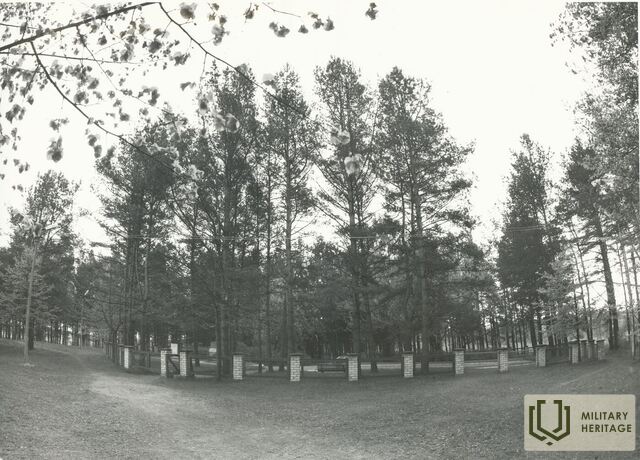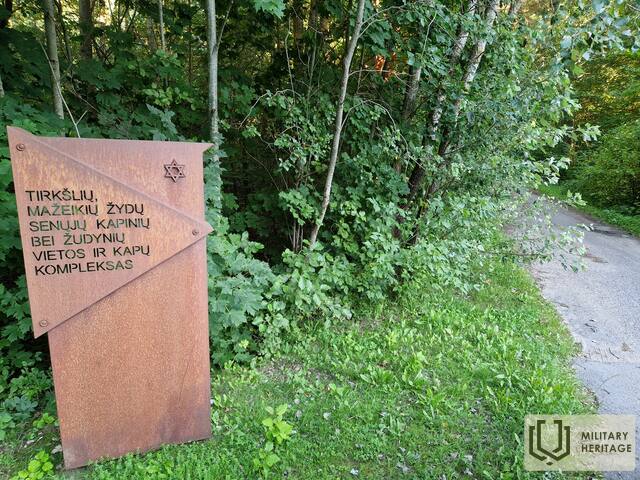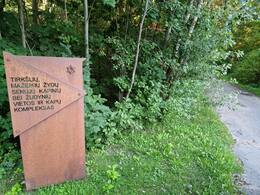2,500 unfortunate souls ended their lives in Mažeikiai

At the end of July 1941, a mass murder of Jews began in Mažeikiai, initiated by the Germans and later continued by local white-collar criminals. People were taken in groups to the Jewish cemetery, forced to undress, and shot near dug pits. Over the course of a few days, more than 2,000 Jews from Mažeikiai and surrounding towns were murdered.
"Rumors about the shooting of Jews in Mažeikiai spread at the end of July, when the Germans arrived in the city in three cars. On July 29, an eyewitness to the events, M. Noreikienė, saw how Jews who had been brought to the Jewish cemetery were digging holes, and the next day they were shot."
Participants in the events provide details: on the first day of the shooting, at approximately 6 a.m., the detainees began to be taken from the barn (about 200 m from the shooting site) in groups (40–50 people) to the Jewish cemetery. The guards, having opened the group, handed it over to the guards and went to drive others. They were taken to the pits in groups of 20–50 people. About 20 m before the pits, they were ordered to undress, sometimes even naked (this depended on gender and age). Those who were undressed were shot in groups (10 people), after which another group was brought. Food, vodka, and beer were brought to the cemetery for the executioners.
It is often stated that on the first day the Jews were shot by the Germans. On the following days the Germans were replaced by the Mažeikiai White Ribbon fighters. After the Mažeikiai Jews were shot, Jews from the towns of the county began to be driven into the barn. The barn could not accommodate everyone, so the others remained in the open air. The White Ribbon fighters guarded them, and in the first days of August they were shot in the same cemetery. The massacres lasted 3-4 days, and the White Ribbon fighters from the county villages also participated in them.
The number of Jews arrested and killed: Akmenė, Klykoliai and Mantartiškiai – about 70 people, Laižuva – about 40, Seda – about 300, Žemalė – 8–9 people, Tirkšliai – about 40, Vegeriai – about 30, Viekšniai – 400, Pikeliai – about 100, Židikai – about 300, Leckava – about 40, Mažeikiai – about 1,000.”
Related timeline
Related objects
The site of the massacre of Jews in Mažeikiai and its surroundings
The object is located near the old Mažeikiai Jewish cemetery. When driving along Sedos Street (road 164) from Mažeikiai towards Tirkšliai/Seda, there is a sign on the left side of the road "Cemetery of the Victims of the Jewish Genocide and World War II".
By the beginning of the Holocaust, on July 1, 1940, about 1,100 Jews lived in the town of Mažeikiai. At the end of June 1941, with the beginning of the German occupation, up to 1,000 Jews were arrested and held in the Mažeikiai synagogue. In mid-July, the Jews of Leckava – about 40 people – were imprisoned in the Lačas barn in Mažeikiai, the women and children in the barn, and the men in the synagogue.
On July 29, 1941, the Germans who arrived in Mažeikiai forced the Jews to dig holes near the Jewish cemetery, and on July 30, at 6 a.m., mass murders began. On the first day, the Germans shot, and later the local White Guards continued the killings. In early August, Jews from other villages and Soviet activists were also shot near the same cemetery.
On December 7, 1944, by order of the Soviet commission, the graves were excavated and a forensic medical examination was conducted. It was established that 3 km from Mažeikiai, on the bank of the Venta River, 5 graves were found in the Jewish cemetery, in which about 4,000 remains were buried. The number of Jews shot near Mažeikiai is indicated differently - from 3,000 to 4,000. Historical research suggests that these numbers are inflated - there were about 2,500 victims.
Currently, the object is a tourist attraction that can be visited by anyone interested in the history of military heritage.






